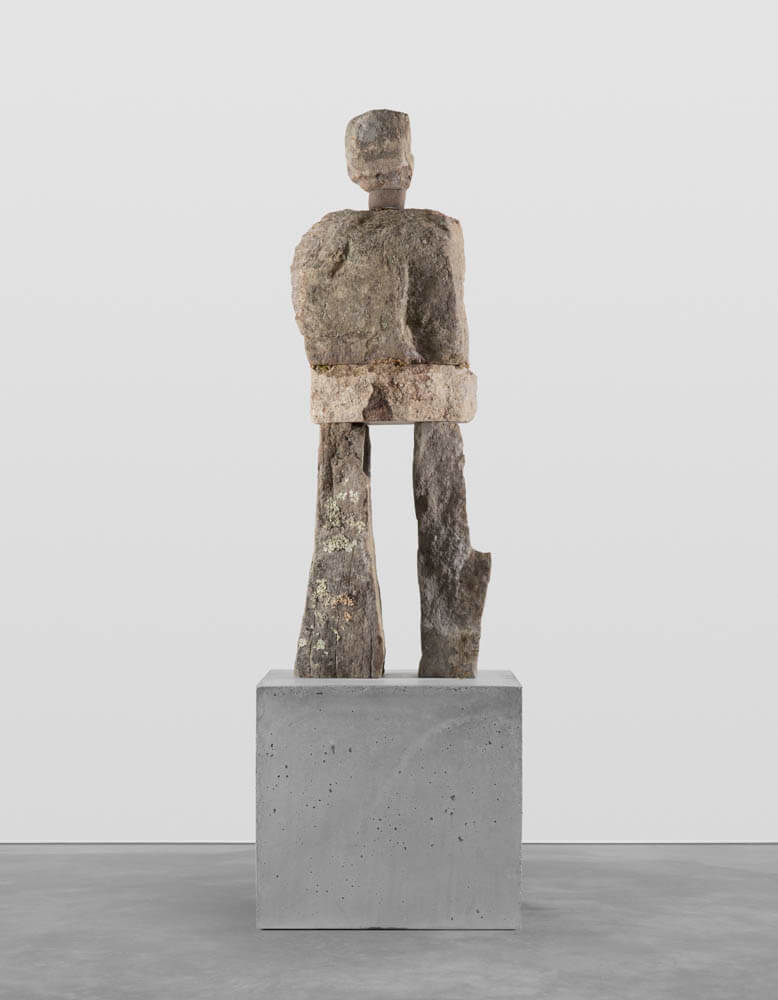
The Fascinated soul has eyes of wonder. Someone obsessed or entranced.
Explore the works below. Before expanding the text, think to yourself:
What do you see?
What do you feel?
What might it be addressing?
What questions do you have?
Do you like it? Why or why not?
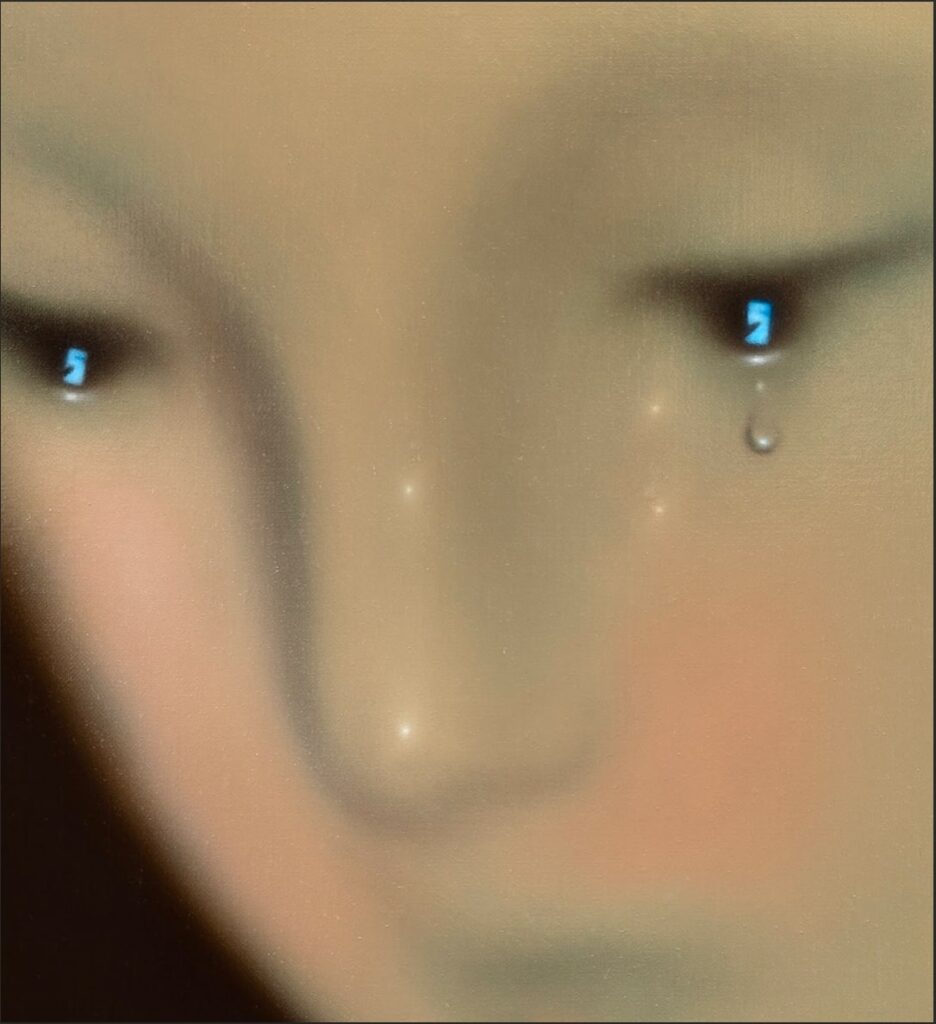
Expand to learn more
This is Blue (2023) by Dabin Ahn. In Blue, a young girl, doll-like in her appearance, stares down at a small, blue, rectangular screen. Our zoomed in view of her face reveals little about what she sees, but the image is recognizable for anyone today. One tear drop forms under her eye. What does she see on her phone? Are they messages? Is she talking with someone? Is the conversation going sour? If what she is looking at makes her sad, shouldn’t she look away?
How do you feel about your phone? When you visit a museum, how much of that time is spent on your phone?
About the Artist
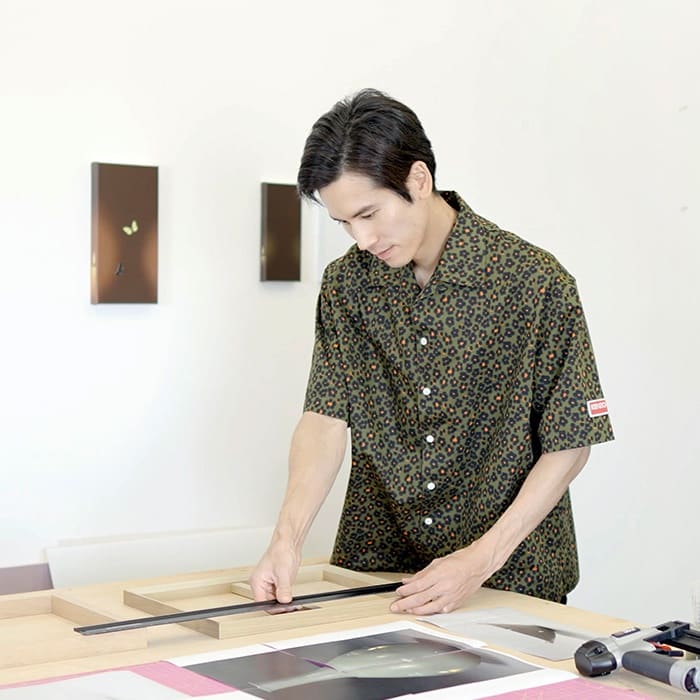
Dabin Ahn (b. 1988) is a Korean painter and sculptor whose work derives from the imagery and aesthetics of porcelain. His painting technique is smooth—so smooth that people are shocked by the lack of visible brush stroke. Much of his work examines the fragility of human emotions, investigating sadness and the ways in which we heal from it.
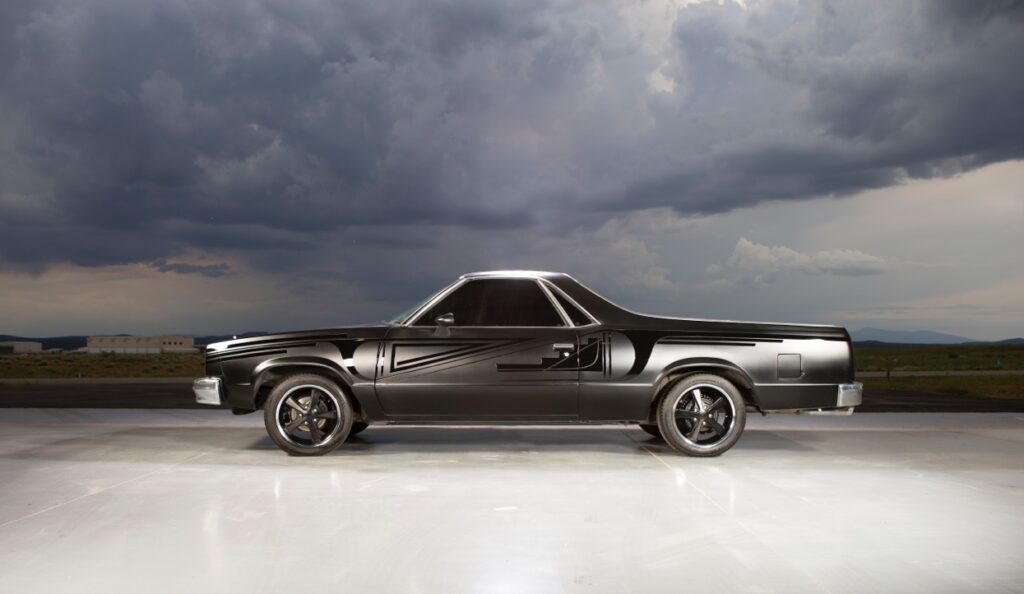
Expand to learn more
This is Maria (2014) by Rose B. Simpson. Maria is a customized and modified 1985 Chevrolet El Camino. Much of Simpson’s life has been spent in Española, New Mexico, the lowrider capital of the world. Simpson, like many residents of the area, developed a love and appreciation for these cars and the culture surrounding them—she even briefly studied automative technology.
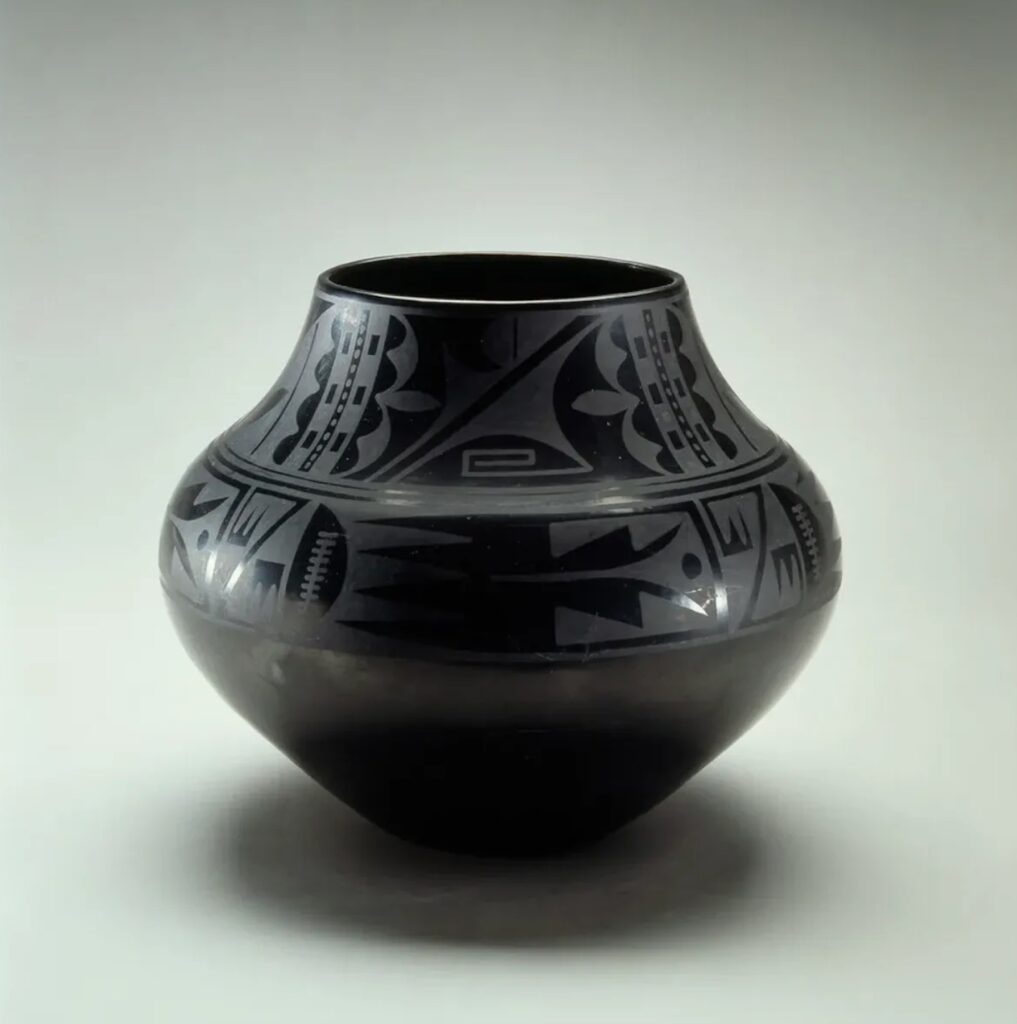
The outside has been painted in two tones of black—matte and glossy—referencing Maria Martinez’s black on black pottery style (left). The patterns mimic the movement of the natural world: the flow of rivers and roll of mountains. At an angle, the glossy paint reflects the landscape surrounding it.
About the Artist
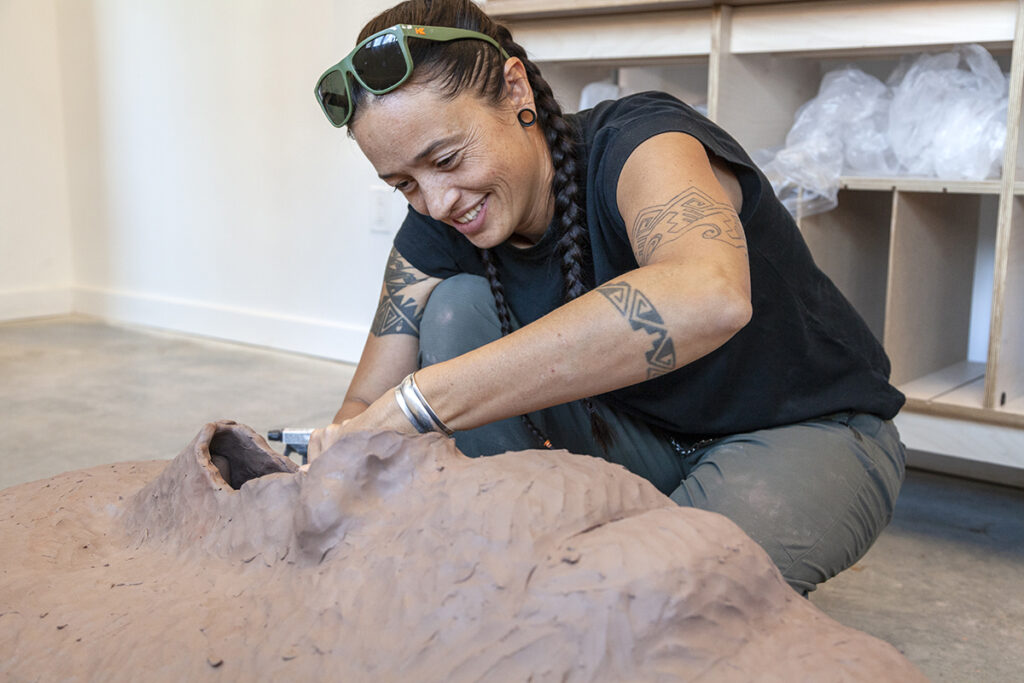
Rose B. Simpson (b. 1983) is a Tewa (Santa Clara Pueblo) sculptor who works primarily in ceramic. Her works often approach the past, present, and future as structured around the matrilineal line. She herself comes from a line of women ceramic artists. Her style is recognizable in the ‘Slap-Slab’ technique in which she assembles her pieces using small slips of clay, leaving the pieces and her own motions—brushstrokes, fingerprints, markings—evident and visible. Her figures are often post-apocalyptic, considering Native American survival in the wake of the climate emergency.
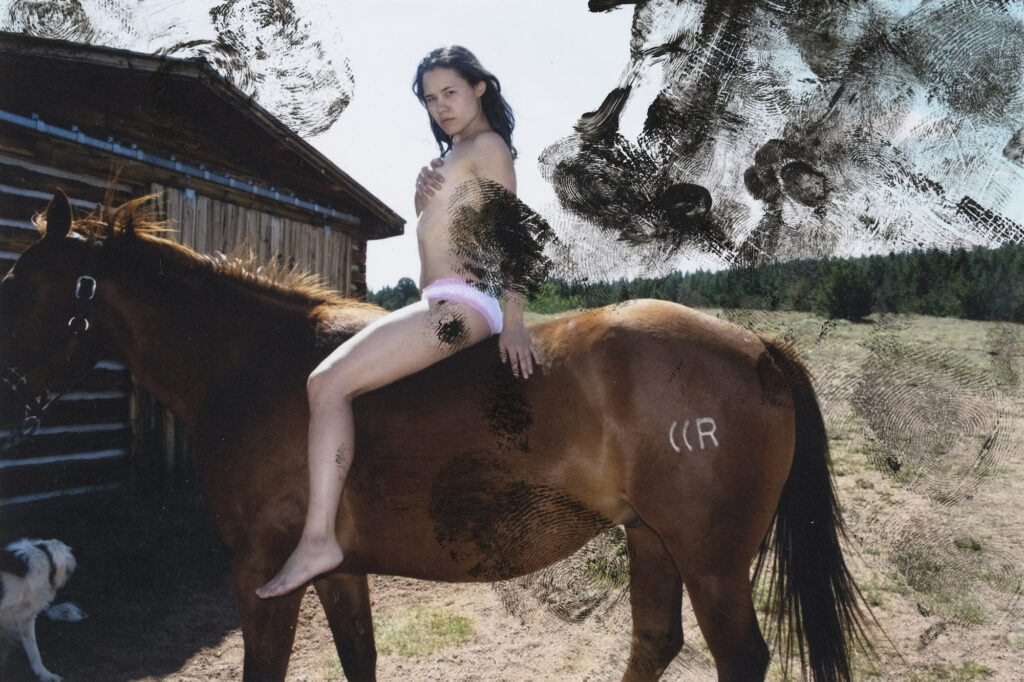
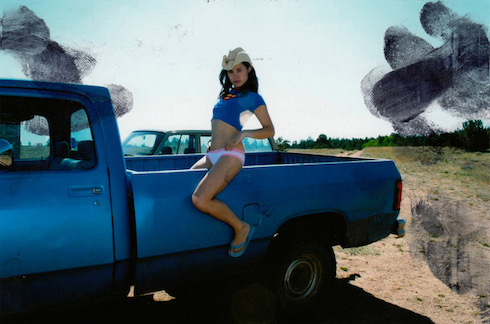

Expand to learn more
These are photos from the Lucky Tiger series (2009) by Laurel Nakadate. Nakadate’s Lucky Tiger series plays with ideas of performance. Seemlingly a series of photos of Nakadate in skimpy clothes across the American-West, a deeper story is revealed in the black markings that cover each photo. After making the original photos, Nakadate met with random men from the internet and public spaces, have them cover their fingertips in fingerprinting ink, and then allow them to touch the photos.
Notice where the markings are. Where do they touch? What do they cover?
About the Artist
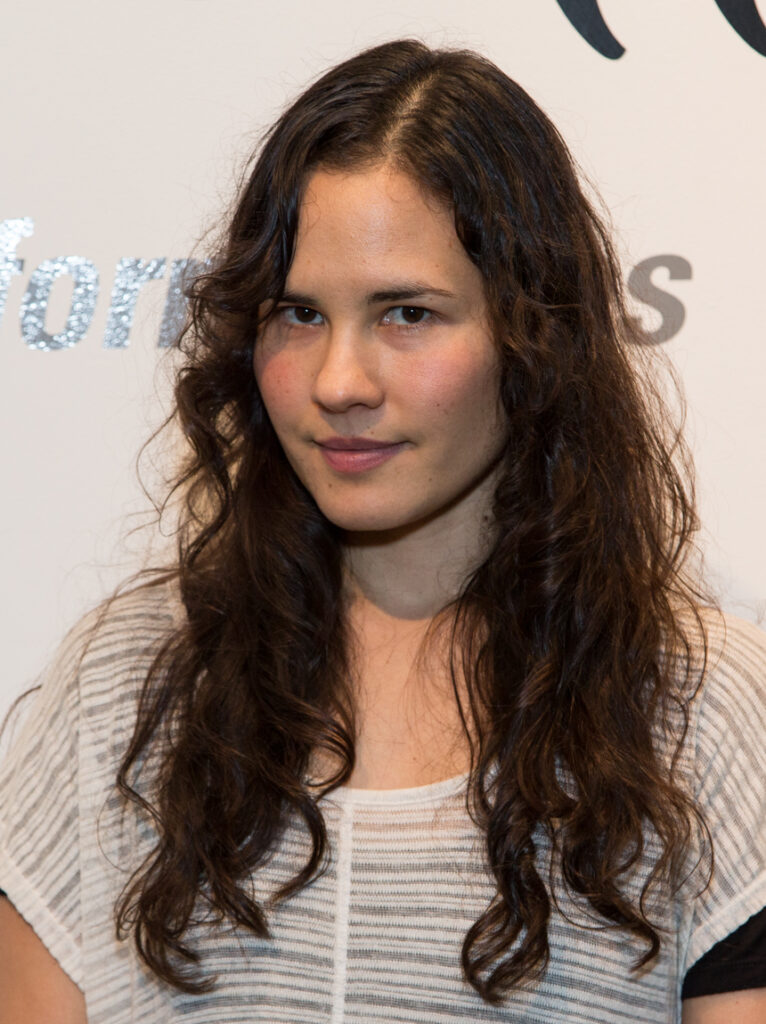
Laurel Nakadate (b. 1975) is a Japanese-American photographer who often uses herself as a subject to investigate psychosexual identity and the relationship that forms between herself and strangers. Her work is often described as voyeuristic and ‘disturbingly intimate’.